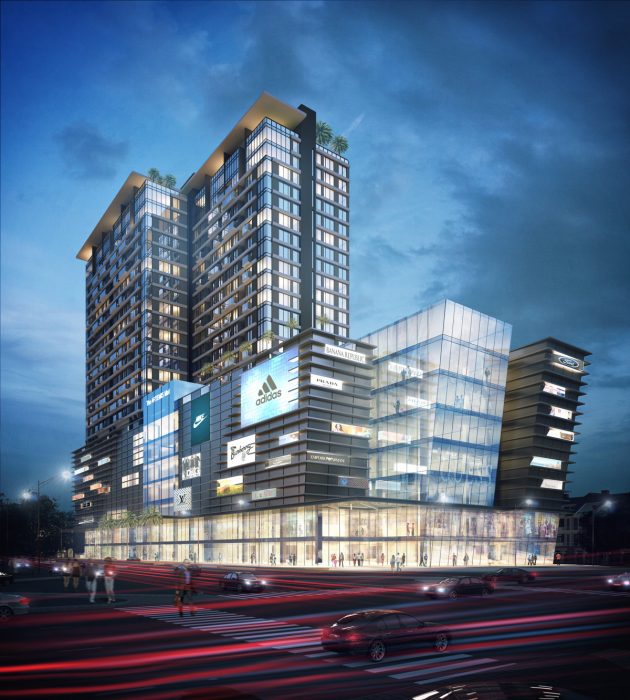Remodeling a home or business is an excellent way to bring a building into the 21st century with a modern look. You can add value to commercial real estate and create a welcoming environment for your clients by making a few changes. The remodeling possibilities are endless, but there are a few factors you should examine. This guide will outline six considerations before remodeling a commercial property.

1. Are there any current violations?
The first step in remodeling a commercial property is to audit existing conditions. If possible, obtain the original plan of the building and any drawing showing changes since its original construction. Next, you’ll want your team of architects to check the infrastructure. You’ll want to let customers know what can stay or need replacement.
This audit is necessary because you may find problems that violate the building code. Some problems, such as putting returns on the railing, are easy to fix. But other violations are more difficult and can cause health problems. For example, the building may contain asbestos and lead. Facilities must comply with EPA guidelines on asbestos or risk fines.
2. How old is the building?
If your building is new, asbestos probably won’t be a problem. However, older structures (constructed in 2000 or earlier) can have this problem, which leads to the following consideration. The age of the building will be an important factor in determining what changes you can make. Your clients may have historical features that they want you to keep, so good communication is essential.
The age of the building is also important for any heating, air conditioning, water and electrical units. Existing infrastructure may have difficulty supporting new loads. If this is the case, the customer will need to replace these systems or make appropriate changes to reinforce the loads. For example, suppose your client wants to use a former shoe store building for a primary care facility. The new building will likely require upgraded electrical installations.
3. What materials will you use?
The next factor you want to consider is the materials you plan to use. Reach out to your client to find the most sustainable option for their building. Sustainability is critical to longevity and giving your customers their money’s worth. In your remodeling, you’ll want to ensure your building will remain strong for decades.
The materials you use must be able to withstand the weather conditions. The exterior of the building faces weather throughout the year, so it must be resistant to heat, snow, ice, and other forms of moisture. The interior also deserves emphasis. Choose high quality wood that will last through constant human use. Low-quality wood risks warping, peeling, and cracking.
4. How can you increase energy efficiency?
Sustainability has become a much higher priority. Businesses and consumers have changed their habits to promote environmentally friendly practices. One way to contribute positively to the planet is to consider energy efficiency when remodeling a property. Buildings are among the most important energy consumers. In fact, they account for 30% of global energy consumption and 27% of energy emissions.
Increasing energy efficiency can start small with windows. Installing double or triple windows stabilizes the temperature inside during extreme winter and summer temperatures. Other ways to improve efficiency include checking your insulation and upgrading your HVAC unit. These changes will be an investment for your customer that pays for itself in the future.
5. Is the building accessible to all?
Another aspect to consider is how accessible the building is. Unfortunately, the old buildings may be outdated in terms of ramps, bathrooms, and more. The Americans with Disabilities Act (ADA) of 1990 set standards for commercial buildings. So you have to make sure that your remodeling meets ADA guidelines and is an accessible environment for everyone.
For example, start with the bathrooms. The ADA says that a unisex toilet room must have a privacy latch and can only contain one urinal, water closet, and toilet. You will also need to install grab bars and lower door hooks. Other ways you may need to comply with the ADA include widening doors, lowering shelves, and adding flashing warning lights.
6. How do you decorate the entrance?
First impressions can go a long way for your client and their customers. Your remodeling should take into account the entrance and exude a welcoming vibe. You’ll want to put a smile on their face from the moment they see the facility.
One way to improve the entrance is to increase visibility. Remove any entryway obstructions that are not serving any purpose. Objects like trash cans and recycling bins are important, but you’ll want to move them to the background, so they don’t draw the eye away from the design. Consider what the client wants as the cornerstone of the remodel. What do they want customers to see as they enter the building?
Vigilance in redesign
Remodeling a commercial property can be an exciting time for your client. They could have renovated their existing building or taken ownership of a new building. Before you get to the drawing board, reach out to your client and discuss these six commercial building remodeling considerations.
